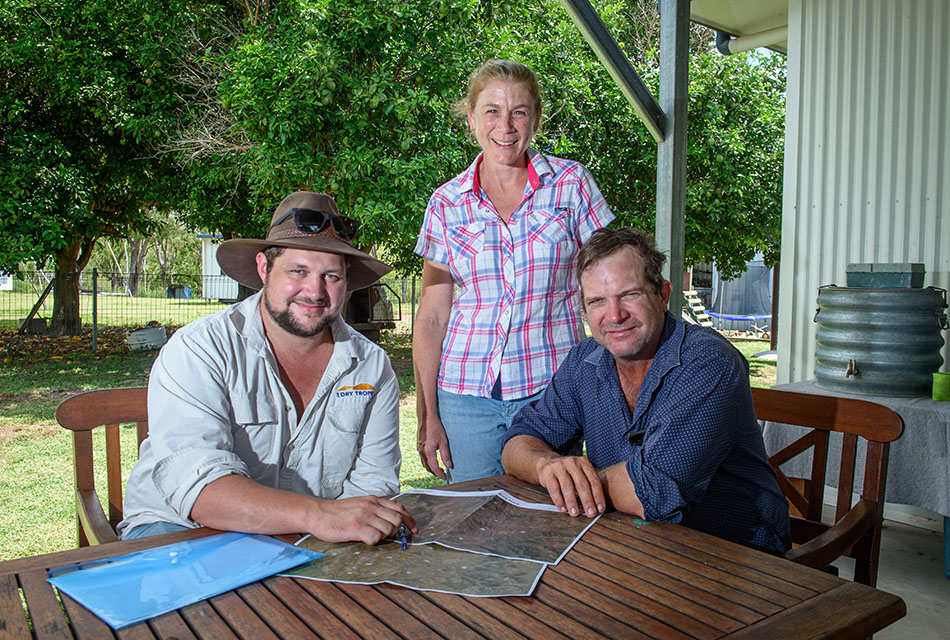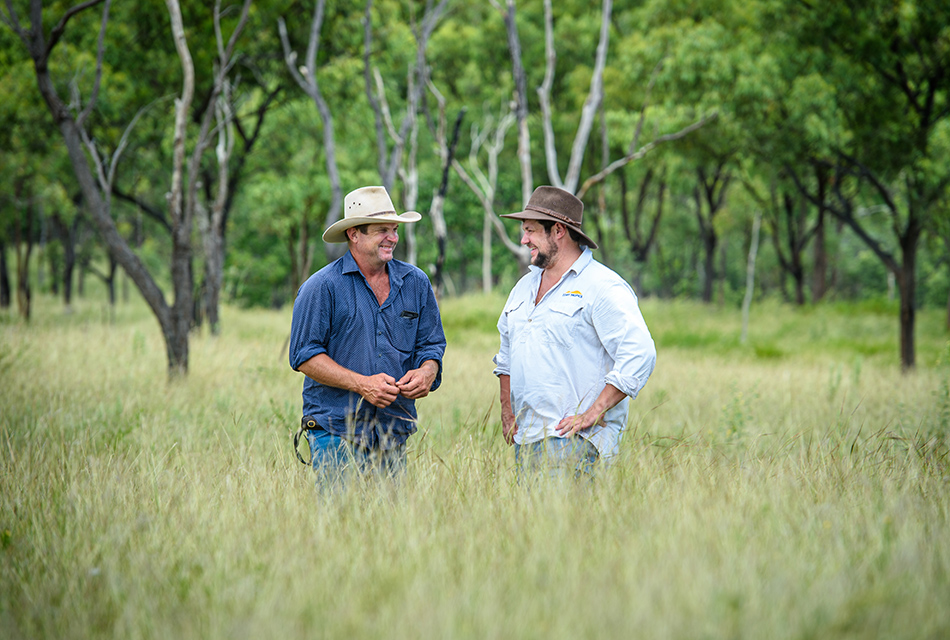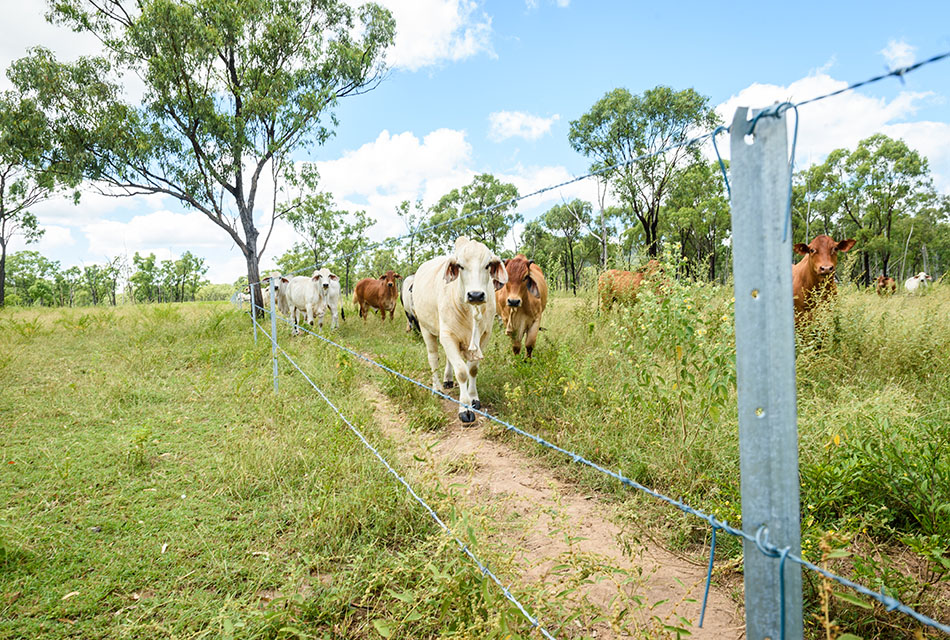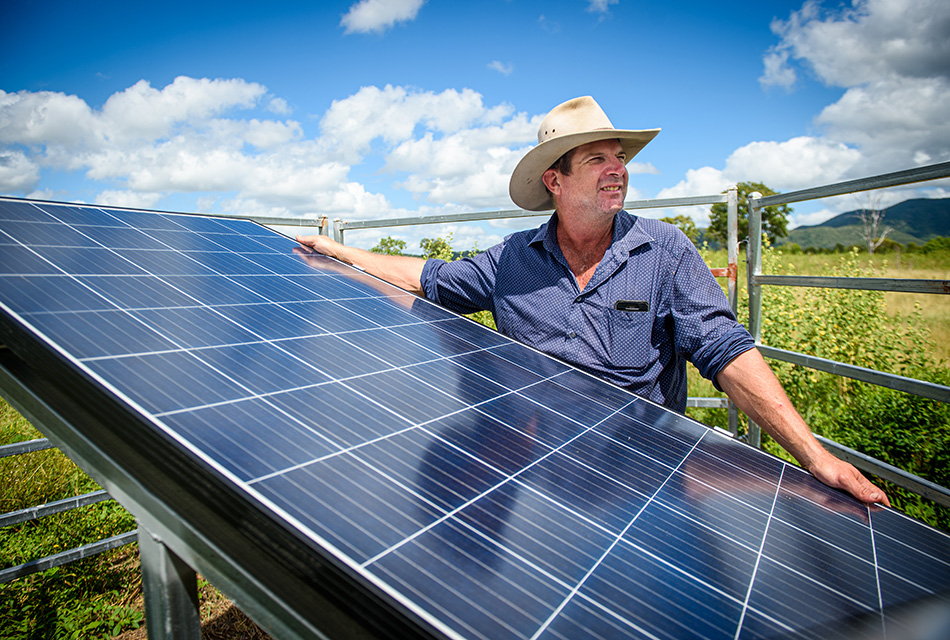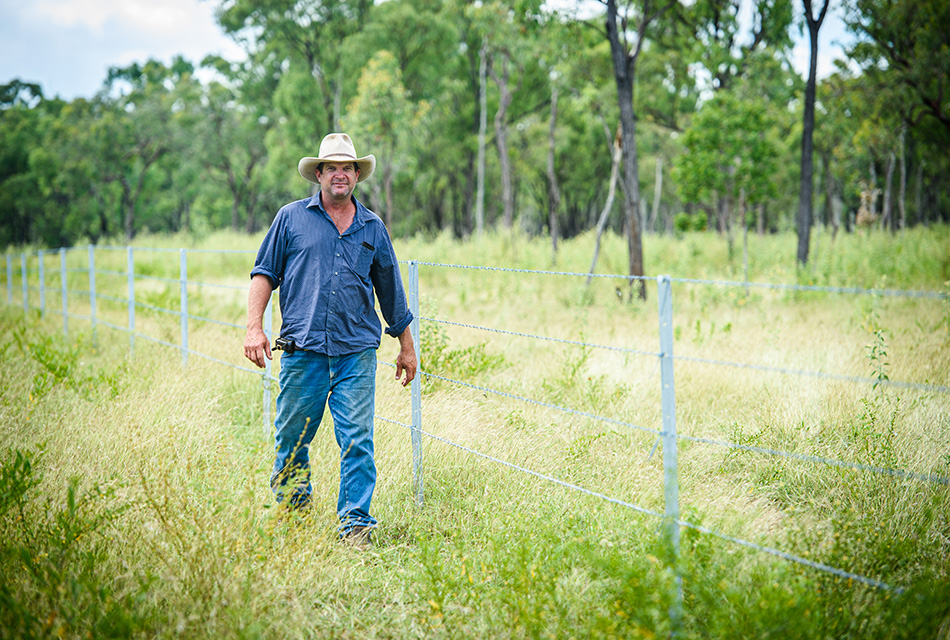White Kangaroo station focuses
on the land to build resilience
John Skinner and son Bailey check pasture cover following summer rainfall.
John and Bree Skinner, of White Kangaroo Station, near Bowen, plan to regenerate their 5500 hectare property to increase sustainable beef production while reducing their exposure to drought and variable seasons.
The NQ Dry Tropics’ Landholders Driving Change (LDC) project has enabled the Skinners to access resources and technical expertise to fast-track their plans to build a more resilient landscape and grazing enterprise.
LDC has provided support to install infrastructure — fencing and water — to enable grazing rotation to increase rest periods for pasture to encourage the recovery of perennial, productive and palatable (3P) grasses.
Mr Skinner said the new grazing system was the single biggest change they had made to overall herd and pasture management.
“Historically, continuous grazing put pressure on preferred grasses which meant the more productive parts of the paddocks were left short leading into the dry season,” he said.
“Twelve months ago, splitting a 2500ha paddock into two meant we were able to introduce rotational grazing and wet season spelling and rest country.
“It wasn’t until the breeders were moved from the sweet country on the flats, which they favoured, did we realise how short parts of the paddock were left leading into summer.
Discussing plans for their property with NQ Dry Tropics Grazing Field Officer Brad Martin (left) are White Kangaroo Station graziers Bree and John Skinner.
White Kangaroo Station grazier John Skinner (left) and NQ Dry Tropics Grazing Field Officer Brad Martin check the fence to split a large paddock into two 12-months ago enabling grazing rotation to increase rest periods for pasture to encourage the recovery of perennial, productive and palatable (3P) grasses.
“We now have better control over that pasture and can reduce grazing pressure to allow it to regenerate. It also makes mustering easier.”
A reliable water supply in paddocks has also been an ongoing challenge. When the Skinners moved to White Kangaroo in 2017, there was one working bore and two dams.
There are now three dams and five bores, ensuring water supply through dry periods and providing options to move cattle around to spell areas.
“NQ Dry Tropics helped us equip an existing bore with a solar pump that provides water to several paddocks. This is helping enormously,” Mr Skinner said.
The reticulation system provides stock water to the entire north end of the property and will reliably handle the larger mob sizes planned.
John Skinner, of White Kangaroo, says equipping an existing bore with a solar pump has provided water to several paddocks, and will reliably handle the planned larger mob sizes.
The long-term health of the landscape is now the focus of the Skinners’ management decisions.
“Getting the right infrastructure in place is important,” Mr Skinner said.
“We’ve got plans to increase the number of paddocks and to use larger mobs of cattle grazing smaller paddocks in rotation, giving them longer to rest which will eventually allow us to increase carrying capacity.
“We want to use spelling to improve the bulk and composition of pastures and to improve land condition.”
White Kangaroo is one of 29 properties in the high-priority Bowen, Broken, Bogie (BBB) catchment participating in the project. Grazing land management actions like these will improve land management, productivity and water quality across 73,923ha.
This includes fencing for improved stock control, riparian fencing, installation of water troughs, tanks and pipelines to improve water distribution and spread grazing pressure, and remediation of small-scale gullies.
This work is being supported by the Landholders Driving Change project, funded through the partnership between the Australian Government’s Reef Trust and the Great Barrier Reef Foundation.
Grazier John Skinner knows new fencing will lead to more pasture and better quality pasture that will help to increase his business resilience.
ALSO IN THIS ISSUE:

